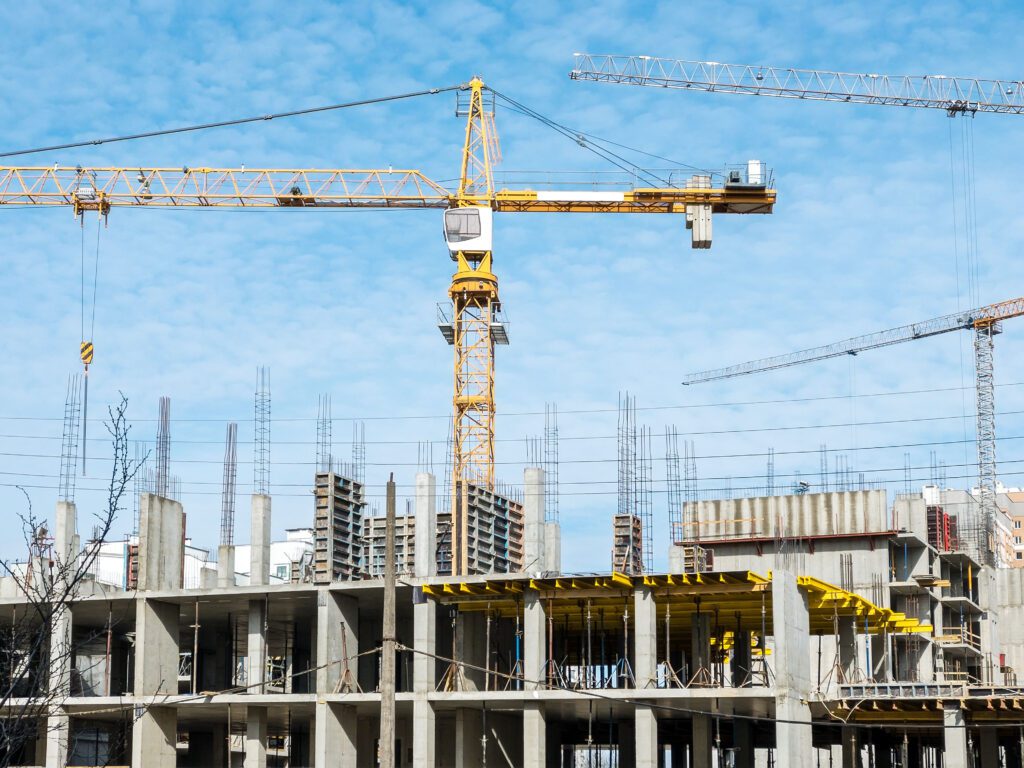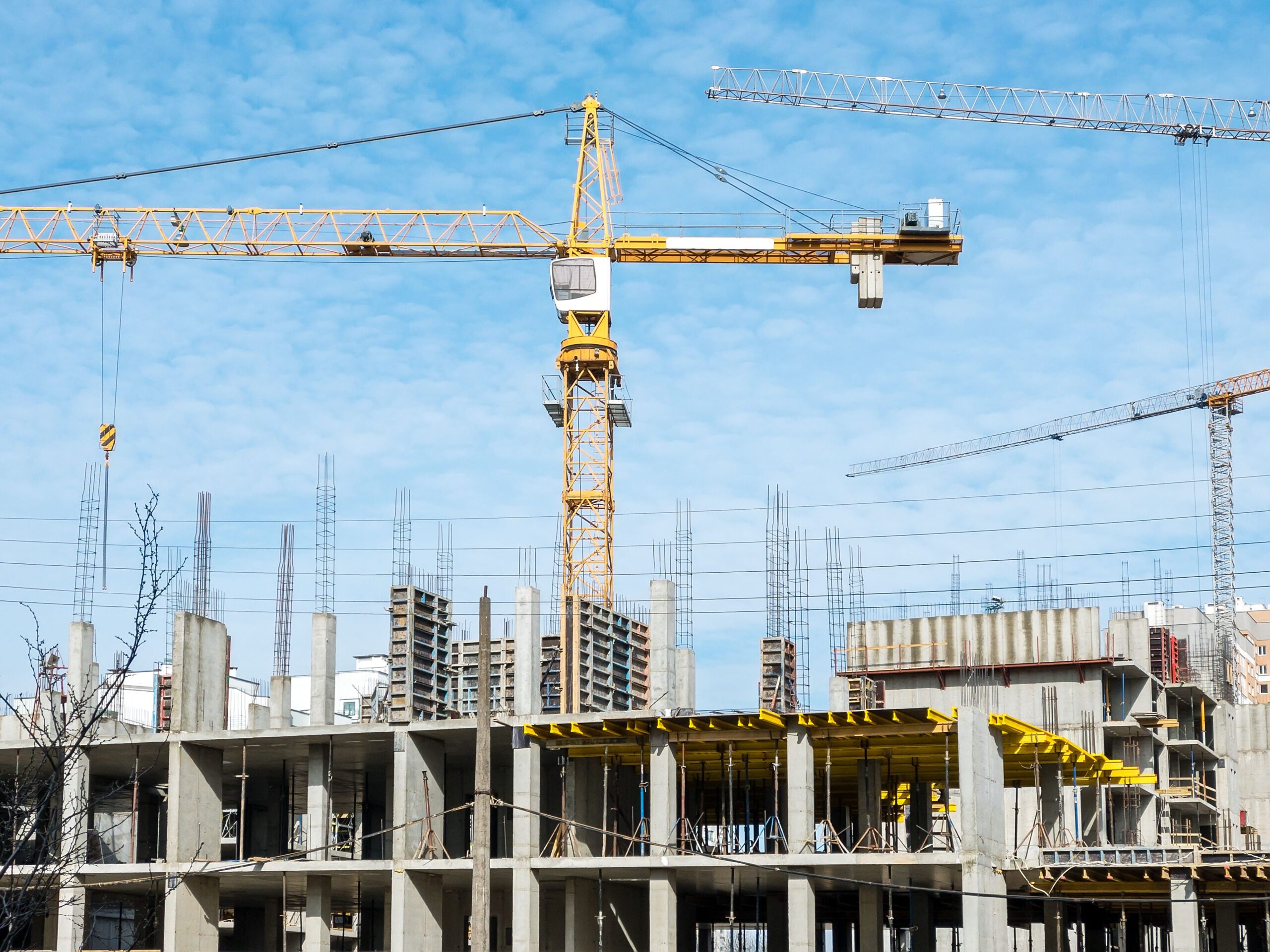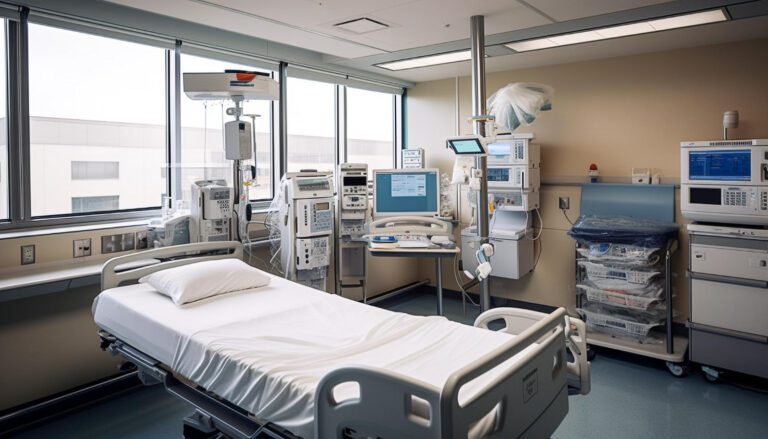
Are you curious about the future of healthcare construction trends? Get ready to explore the evolving landscape of this dynamic industry. The importance of healthcare construction is growing at an unprecedented pace, driven by technological advancements and the increasing demand for specialized medical infrastructure.
In recent years, new construction projects have been on the rise, as healthcare facilities strive to meet the changing needs of patients and provide state-of-the-art care. From building systems to code compliance, every aspect of construction plays a crucial role in creating modern healthcare environments that foster healing and innovation.
Moreover, the impact of technology cannot be overstated. Cutting-edge advancements are revolutionizing healthcare facilities, enabling improved patient outcomes and streamlined operations. From smart hospitals with integrated digital solutions to advanced medical equipment, these innovations are reshaping the way healthcare providers deliver care.
So join us as we delve into the world of healthcare construction. Discover how these developments are transforming the industry and shaping a brighter future for patient-centered care.
Table of Contents
- 0.1 Current State of Healthcare Construction Trends
- 0.2 Key Factors Driving Healthcare Construction
- 0.3 Emerging Technologies Shaping Healthcare Construction
- 0.4 Sustainable Practices in Healthcare Construction
- 0.4.1 Incorporation of green building materials and energy-efficient systems:
- 0.4.2 Energy efficiency is another crucial element in sustainable healthcare construction.
- 0.4.3 Designing with a focus on reducing waste generation during construction:
- 0.4.4 Integration of renewable energy sources like solar power into healthcare facilities:
- 0.5 Top Trends to Watch in Healthcare Construction
- 0.5.1 Increased Use of Telehealth Technology within Medical Facilities
- 0.5.2 Growing Popularity of Modular Construction Methods for Faster Project Completion
- 0.5.3 Integration of Artificial Intelligence (AI) Systems to Enhance Operational Efficiency
- 0.5.4 Use of biophilic design principles to promote healing environments
- 0.5.5 Integration of Internet-of-things (IoT) devices for real-time monitoring and data analysis
- 0.6 Key Factors Driving Healthcare Construction
- 0.7 Emerging Technologies in Healthcare Construction
- 0.8 Futureproofing Hospitals: Design Considerations
- 0.9 Role of Contractors and Architects in Healthcare Construction
- 0.10 Conclusion
- 0.10.1 Frequently Asked Questions?
- 0.10.2 What are some sustainable practices being implemented in healthcare construction in recent years?
- 0.10.3 How can emerging technologies in healthcare construction benefit patients?
- 0.10.4 What role do contractors and architects play in healthcare construction?
- 0.10.5 How can hospitals be future-proofed through design considerations?
- 1 Subscribe to our Newsletter
Current State of Healthcare Construction Trends
Recent years have witnessed a significant rise in the number of hospital construction projects taking place across the globe. With the growing demand for quality healthcare services, countries are investing heavily in building new hospitals and upgrading existing ones to meet the evolving needs of their populations.
One notable trend in hospital construction is the focus on creating flexible and adaptable healthcare spaces. Designers and architects are incorporating innovative solutions that allow for easy reconfiguration of hospital layouts to accommodate changing patient requirements. This approach ensures that hospitals can efficiently adapt to future demands without undergoing extensive renovations or disruptions to patient care.
Integrating Smart Technologies
Moreover, the integration of smart technologies has become a key consideration in modern hospital construction. These technologies play a crucial role in improving patient care by enhancing communication, efficiency, and overall operational effectiveness. From advanced electronic medical record systems to automated medication dispensing units, hospitals are embracing digital solutions that streamline processes and enable seamless collaboration among healthcare providers.
In a recent hospital construction survey conducted with respondents from various countries, it was revealed that nearly 80% of hospitals prioritize integrating smart technologies into their infrastructure. This indicates widespread recognition of technology’s potential to revolutionize healthcare delivery and enhance patient outcomes.
The surge in hospital construction projects is not limited to any specific region or country. Governments worldwide acknowledge the importance of robust healthcare systems and are actively investing in expanding their capacity through new hospital construction. Developing nations, in particular, are witnessing substantial growth in this sector as they strive to improve access to quality healthcare for their citizens.
Key Factors Driving Healthcare Construction
The healthcare industry is constantly evolving to meet the growing needs of an aging population and advances in medical technology. As we look ahead, several key factors are expected to drive healthcare construction trends. From the emphasis on infection control measures to the shift towards outpatient facilities, these factors will shape the landscape of healthcare construction in the coming years.
An aging population and increased healthcare needs drive construction growth.
The aging population is one of the primary drivers behind the growth in healthcare construction. With more elderly individuals requiring specialized care, hospitals and medical facilities need to expand their infrastructure to accommodate this demand. This includes building new wings and entire facilities dedicated to geriatric care and renovating existing spaces to create more comfortable environments for older patients.
Advancements in medical technology have led to increased life expectancy and improved treatments for chronic diseases. As a result, more people seek medical attention, leading to a higher demand for healthcare services. To meet this growing need, healthcare providers must invest in expanding their facilities through new construction projects.
Emphasis on infection control measures and patient safety protocols
In recent years, there has been a heightened focus on infection control measures within healthcare facilities. The COVID-19 pandemic has underscored the importance of maintaining strict protocols to prevent the spread of infectious diseases. In response, healthcare construction projects are now incorporating design elements that prioritize infection control and patient safety.
For instance, hospital layouts are being reimagined with separate entrances and waiting areas for patients with contagious illnesses. Air filtration systems are being upgraded to ensure clean air circulation throughout the facility. Touchless technology is implemented wherever possible to minimize contact between patients and surfaces.
Shift towards outpatient facilities to meet changing healthcare demands
As healthcare needs continue to evolve, there is a noticeable shift towards outpatient facilities. This trend is driven by several factors, including cost-effectiveness, convenience, and the desire for more personalized care. Outpatient facilities offer a wide range of services, from routine check-ups to minor surgeries, without needing overnight stays.
Survey respondents have indicated a preference for outpatient care due to its flexibility and shorter wait times.
Emerging Technologies Shaping Healthcare Construction
The healthcare industry is constantly evolving, and advancements in technology have played a significant role in shaping the future of healthcare construction. In the near future, we can expect to see the implementation of advanced technologies that will revolutionize the way healthcare facilities are designed and built. Let’s explore some of these emerging technologies and their impact on healthcare construction.
Utilization of Virtual Reality (VR) for Enhanced Design Visualization
Virtual reality (VR) is no longer limited to gaming; it has entered various industries, including healthcare. VR allows architects, engineers, and stakeholders to visualize designs in a three-dimensional virtual environment before any physical construction takes place. This technology provides an immersive experience that enables better decision-making and reduces errors during the design phase.
With VR, designers can walk through a virtual representation of the facility, making adjustments as needed to ensure optimal functionality and efficiency. Stakeholders can also provide valuable input early in the process, leading to improved collaboration and, ultimately, a better end result.
Implementation of Building Information Modeling (BIM) for Efficient Project Management
Building Information Modeling (BIM) has become increasingly popular in recent years due to its ability to streamline project management processes. BIM involves creating digital representations of a building’s physical and functional characteristics. It allows all stakeholders involved in a project to access real-time information about various aspects such as design, cost estimation, scheduling, and maintenance.
By utilizing BIM software, healthcare construction teams can collaborate more effectively by sharing data seamlessly across different disciplines. This improves coordination among architects, engineers, contractors, and suppliers throughout the entire project lifecycle. The use of BIM not only enhances communication but also helps identify potential clashes or conflicts early on, reducing rework and saving time and resources.
Adoption of Robotics and Automation to Streamline Construction Processes
The healthcare construction industry is embracing robotics and automation in an effort to increase productivity while minimizing risks associated with human error. Robots can perform repetitive tasks more efficiently and accurately than humans, allowing for faster construction times and improved quality control.
Robotic systems can be used for various purposes in healthcare construction, such as bricklaying, plastering , welding, and demolition.
Sustainable Practices in Healthcare Construction
Incorporation of green building materials and energy-efficient systems:
Sustainability has become a top priority in healthcare construction, and as we look towards 2024, the focus on incorporating green building materials and energy-efficient systems will only continue to grow. Facilities professionals recognize the importance of reducing their environmental impact while creating healing spaces for patients.
One key aspect of sustainable healthcare construction is using green building materials. These materials are not only environmentally friendly, but they also promote healthier indoor environments. For instance, using low-VOC (volatile organic compounds) paints and adhesives can help improve air quality, benefiting patients and staff members. Utilizing recycled or locally sourced materials reduces the carbon footprint associated with transportation.
Energy efficiency is another crucial element in sustainable healthcare construction.
Facilities can significantly reduce their energy consumption by implementing energy-efficient systems such as LED lighting and smart HVAC controls. This not only lowers operational costs but also contributes to a greener future by minimizing greenhouse gas emissions.
Designing with a focus on reducing waste generation during construction:
Minimizing waste generation is an essential consideration in sustainable healthcare construction. Designing with this goal in mind ensures that resources are used efficiently throughout the entire construction process.
One approach to reducing waste is through careful planning and coordination among project stakeholders. By involving architects, contractors, and suppliers early on, opportunities for waste reduction can be identified. For example, prefabricated components can be utilized to minimize on-site material waste.
Another strategy involves incorporating recycling programs into the construction process itself. Seated areas for separating recyclable materials allow easy sorting and proper disposal. Reusing existing structures or repurposing materials from demolished buildings can further minimize waste generation.
Integration of renewable energy sources like solar power into healthcare facilities:
As we move towards 2024, integrating renewable energy sources like solar power into healthcare facilities will play a significant role in sustainable construction practices. This initiative not only reduces reliance on traditional energy sources but also provides reliable and clean power for healthcare operations.
Installing solar panels on the roofs of healthcare facilities can generate electricity to offset the demand from the electric grid.
Top Trends to Watch in Healthcare Construction
The healthcare industry constantly evolves, and the construction sector plays a pivotal role in meeting its changing needs. As we look ahead, several trends are expected to shape the landscape of healthcare construction. From the increased use of telehealth technology within medical facilities to the growing popularity of modular construction methods, these trends promise to revolutionize how healthcare facilities are built and operated.
Increased Use of Telehealth Technology within Medical Facilities
Telehealth has emerged as a game-changer in the healthcare industry, offering convenient access to medical services remotely. In a few years, we can expect an even greater integration of telehealth technology within medical facilities. This trend will not only enhance patient care but also impact the design and layout of healthcare buildings.
With telehealth becoming more prevalent, medical facilities will need dedicated spaces equipped with state-of-the-art video conferencing equipment and high-speed internet connections. These areas will allow patients to connect with their healthcare providers virtually, reducing the need for physical visits while maintaining quality care. Architects and designers will need to consider privacy concerns when creating these spaces to ensure patient confidentiality.
Growing Popularity of Modular Construction Methods for Faster Project Completion
In an era where speed is crucial, modular construction methods have gained significant traction in recent years. This trend is set to continue in 2024 and beyond as healthcare organizations seek faster project completion times without compromising quality.
Modular construction involves assembling pre-fabricated components off-site before transporting them to the desired location for installation. This approach significantly reduces construction timelines by eliminating weather-related delays and streamlining on-site work. Moreover, it allows for greater precision and quality control during fabrication.
By adopting modular construction methods, hospitals and clinics can minimize disruptions caused by lengthy construction processes while delivering top-notch facilities that meet stringent regulatory requirements.
Integration of Artificial Intelligence (AI) Systems to Enhance Operational Efficiency
Artificial intelligence (AI) has permeated various industries, and healthcare is no exception. In a few years, we can anticipate a greater integration of AI systems within healthcare construction projects to enhance operational efficiency.
AI-powered solutions can optimize building management systems, automate routine tasks, and improve energy efficiency.
Use of biophilic design principles to promote healing environments
Another exciting trend shaping healthcare construction is the integration of biophilic design principles. Biophilia refers to our innate connection with nature, and incorporating this concept into healthcare spaces has proven beneficial for patients’ well-being and recovery.
Healthcare facilities increasingly embrace natural light, indoor plants, and soothing color palettes to create healing environments. Research has shown that exposure to nature-like settings can reduce stress levels, enhance patient satisfaction, and even expedite healing processes.
Integration of Internet-of-things (IoT) devices for real-time monitoring and data analysis
The integration of Internet-of-things (IoT) devices is transforming how healthcare facilities operate and deliver care. In the years ahead, we can expect an increased reliance on IoT devices for real-time monitoring and data analysis.
IoT technology enables the collection of valuable data from various sources within a hospital or clinic setting. This data can be used to monitor patient vitals remotely, track equipment usage, optimize energy consumption, improve workflow efficiency, and enhance the overall patient experience.
Imagine a smart clinic where IoT sensors continuously monitor waiting times in different rooms. This information can be analyzed to identify bottlenecks and optimize patient flow, ensuring a seamless experience for everyone. Furthermore, IoT devices can also alert healthcare providers of potential equipment failures or supply shortages, enabling proactive maintenance and preventing disruptions in patient care.
Key Factors Driving Healthcare Construction
The healthcare industry is constantly evolving, and as we look ahead, several key factors are expected to drive healthcare construction. From government initiatives promoting investment in healthcare infrastructure to evolving regulations and compliance standards shaping facility design requirements, numerous aspects will shape the landscape of healthcare construction in the coming years.
Government Initiatives Promoting Investments in Healthcare Infrastructure
One of the primary drivers behind healthcare construction is the emphasis on government initiatives promoting investment in healthcare infrastructure. Governments around the world recognize the need for modernized facilities to meet the growing demands of their respective populations. As a result, they are allocating significant funds toward expanding existing health systems and building new medical centers. This increased investment aims to improve access to quality healthcare services and enhance overall patient outcomes.
Evolving Regulations and Compliance Standards Shaping Facility Design Requirements
Another crucial factor influencing healthcare construction is the ever-evolving regulations and compliance standards. As technology advances and new research emerges, regulations surrounding facility design continue to change. We expect a greater focus on energy efficiency, lighting controls, data security measures, and infection control protocols within healthcare facilities. These evolving standards will require architects and builders to incorporate cutting-edge solutions into their designs while ensuring patient safety remains a top priority.
Demand for Specialized Medical Centers Catering to Specific Health Conditions
The increasing demand for specialized medical centers catering to specific health conditions also drives healthcare construction. Patients today seek personalized care tailored to their unique needs. This has led to a rise in specialty hospitals dedicated solely to areas such as cancer treatment, cardiovascular care, orthopedics, or mental health services. These specialized centers offer state-of-the-art equipment, expert staff, and focused care that can lead to improved patient outcomes.
Emerging Technologies in Healthcare Construction
Emerging technologies are poised to revolutionize the industry in the ever-evolving world of healthcare construction. From customized medical equipment to enhanced construction visualization, these innovations have the potential to improve patient care and project efficiency. Let’s explore some of the key technologies that will shape healthcare construction in the coming year.
Adoption of 3D Printing for Customized Medical Equipment and Prosthetics
One exciting development in healthcare is the adoption of 3D printing technology. This innovative approach allows for the creation of customized medical equipment and prosthetics, tailored specifically to individual patients’ needs. By utilizing advanced materials and precise measurements, healthcare professionals can now produce items such as hearing aids, braces, and even artificial limbs with greater accuracy and efficiency.
The benefits of 3D printing in healthcare are manifold. Firstly, it reduces production time significantly compared to traditional manufacturing methods. This enables a higher degree of customization, ensuring better patient outcomes. For example, intricate designs can be created to match specific anatomical structures or address unique emergency situations.
Implementation of Augmented Reality (AR) for Enhanced Construction Visualization
Augmented Reality (AR) is another technology set to transform healthcare construction in the near future. By overlaying digital information onto real-world environments, AR provides architects and builders with an immersive tool for visualizing projects before they are constructed physically. This technology allows stakeholders to gain a comprehensive understanding of how different design elements will interact within a space.
With AR, designers can walk through virtual mock-ups of hospitals and clinics, identifying potential issues early on in the planning phase. This not only saves time but also minimizes costly mistakes during actual construction. Moreover, AR facilitates collaboration between all parties involved by providing a shared visual reference point throughout the project lifecycle.
Use of Drones for Site Inspections and Monitoring During Construction Projects
The utilization of drones in healthcare construction has gained significant traction in recent years, and this trend is set to continue. Drones offer a cost-effective and efficient means of conducting site inspections and monitoring progress during construction projects.
Futureproofing Hospitals: Design Considerations
In the fast-paced world of healthcare, staying ahead of technological advancements is crucial. As we look to the future of healthcare construction, it is essential to consider design strategies that will futureproof hospitals and ensure they can adapt to the changing needs of patients and medical professionals. Here are some key considerations for designing hospitals that can stand the test of time.
Flexibility in design to accommodate future technological advancements
One of the primary challenges in healthcare construction is ensuring that facilities can seamlessly integrate new technologies as they emerge. To address this, architects and designers must prioritize flexibility in their plans. For instance, patient rooms should be designed with adaptable layouts that can easily accommodate new equipment or technology without major renovations. This flexibility allows hospitals to keep up with rapidly evolving medical practices and deliver high-quality care.
To achieve this, hospital designs should incorporate modular elements that can be easily reconfigured or upgraded as needed. This could include movable walls, adjustable lighting systems, and modular furniture arrangements. By embracing a modular approach, hospitals can avoid costly and disruptive renovations down the line when new technologies become available.
Emphasis on creating adaptable spaces to meet changing healthcare needs
The healthcare landscape is constantly evolving, and hospitals must be prepared to adapt to new trends and challenges. Designing adaptable spaces is key to meeting these changing needs.
One way to achieve this is by creating flexible operating rooms that can be easily reconfigured for different procedures.
Role of Contractors and Architects in Healthcare Construction
Collaboration between contractors, architects, and healthcare professionals is paramount. By working together, these professionals can ensure that the design of healthcare buildings meets the functional needs of patients and staff alike.
Incorporating evidence-based design principles is a key aspect of construction projects in the healthcare industry. This approach involves utilizing research findings to create environments that enhance patient outcomes. For example, studies have shown that access to natural light and views of nature can promote healing and reduce stress levels for patients. By integrating such elements into their designs, architects can contribute to positive patient experiences.
Another crucial consideration for contractors and architects involved in healthcare construction is finding cost-effective solutions without compromising quality or safety. With rising healthcare costs, it’s essential to strike a balance between affordability and delivering high-quality facilities. This requires careful planning, efficient use of resources, and innovative approaches to construction methods.
Conclusion
It is clear that technology and automation will play a pivotal role in the near future. With advancements in robotics, artificial intelligence, and digital tools, the construction industry is undergoing a transformative shift. In healthcare construction, specifically, these technological advancements are poised to streamline processes, improve efficiency, and enhance patient care.
Imagine a construction site where robots work alongside human workers, efficiently executing tasks with precision and speed. Automated systems can assist in heavy lifting, reducing physical strain on workers while increasing productivity. Digital tools such as Building Information Modeling (BIM) enable architects and contractors to collaborate seamlessly, resulting in more accurate designs and streamlined construction processes.
The integration of technology into healthcare construction not only improves efficiency but also enhances patient care. Imagine hospitals equipped with smart technologies that monitor patients’ vital signs in real-time or robotic systems that assist doctors during surgeries. These advancements have the potential to revolutionize healthcare delivery by creating safer environments for patients and enabling medical professionals to provide better outcomes.
Frequently Asked Questions?
What are some sustainable practices being implemented in healthcare construction in recent years?
Sustainable practices are gaining traction in healthcare construction due to their positive impact on both the environment and patient well-being. Some examples include using energy-efficient materials for insulation, implementing renewable energy sources such as solar panels or geothermal systems, incorporating green spaces within hospital campuses for improved air quality, utilizing rainwater harvesting systems for irrigation purposes, and employing waste management strategies that prioritize recycling and minimize landfill contributions.
How can emerging technologies in healthcare construction benefit patients?
Emerging technologies in healthcare construction have the potential to greatly benefit patients. For example, the integration of smart technologies can enable hospitals to monitor patients’ vital signs remotely, allowing for early detection of any health issues and prompt intervention. Robotic systems can assist doctors during surgeries, enhancing precision and minimizing risks. Digital tools, such as telemedicine platforms, can facilitate remote consultations, making healthcare more accessible and convenient for patients.
What role do contractors and architects play in healthcare construction?
Contractors and architects play a crucial role in healthcare construction by collaborating on the design and execution of hospital projects. Architects are responsible for creating functional and aesthetically pleasing spaces that meet the unique needs of healthcare facilities. Contractors bring these designs to life through their expertise in project management, ensuring that construction is executed efficiently while adhering to safety standards. Their collaboration ensures that hospitals are built with patient care, efficiency, and sustainability in mind.
How can hospitals be future-proofed through design considerations?
Design considerations are essential for future-proofing hospitals. Flexibility is key, as it allows spaces to be easily adapted or repurposed as medical technology evolves or patient needs change. Incorporating modular designs enables scalability and easy expansion without disrupting operations.



